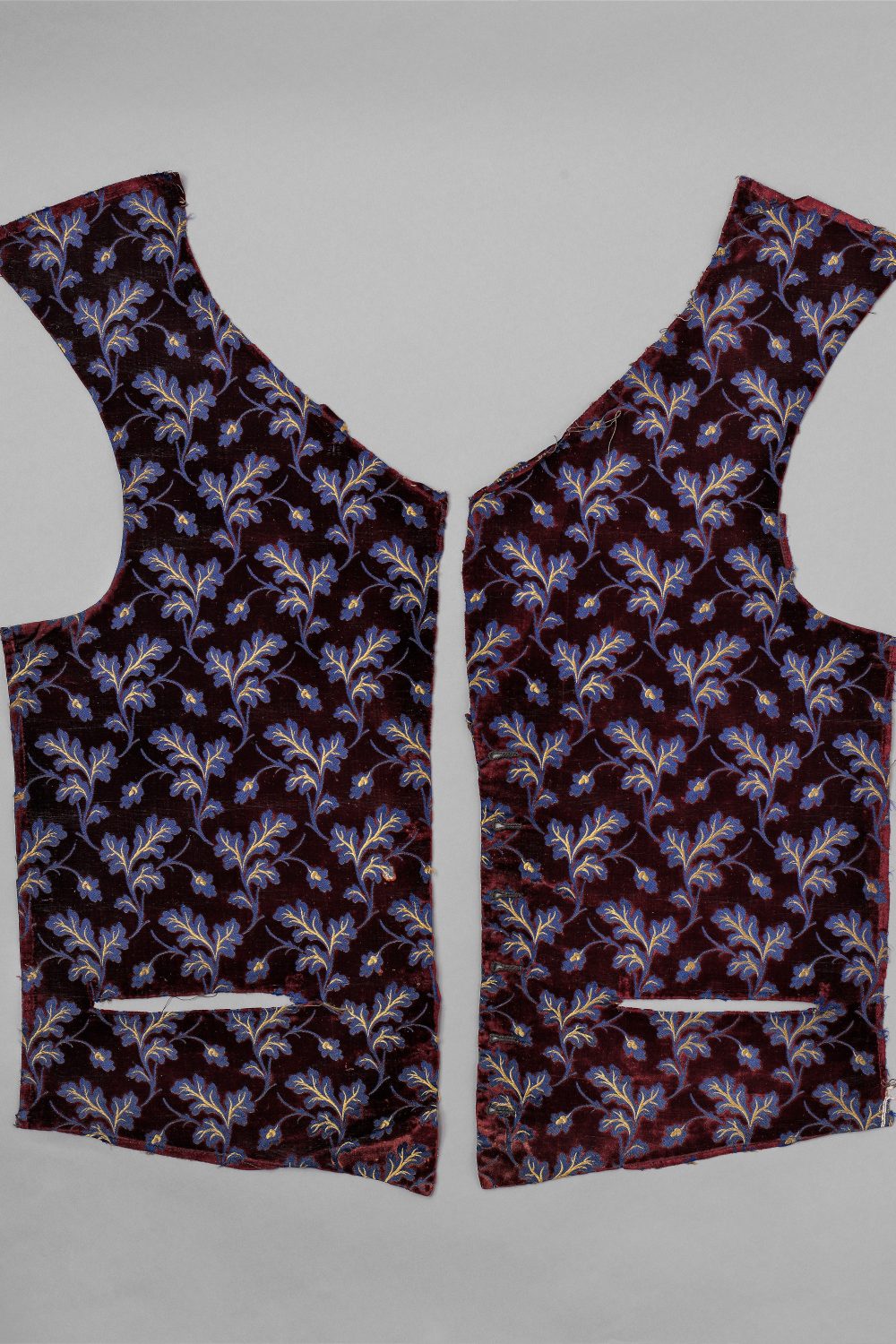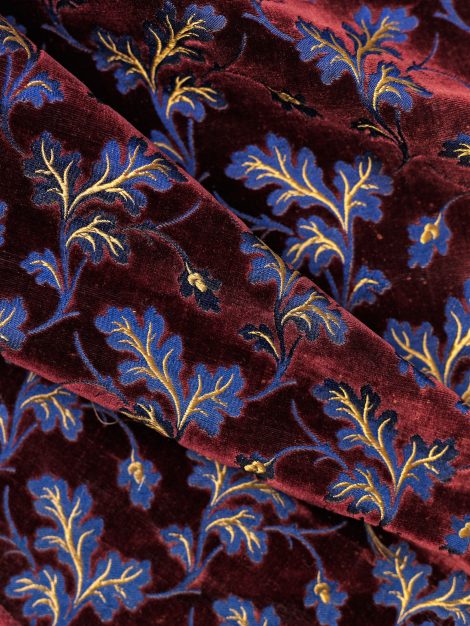The John Bright Collection owns a number of fine examples of men’s waistcoats dating from the 1830s to the 1850s. During this period waistcoats provided decorative elements to masculine attire that had become increasingly subdued, employing a great variety of colours, fabrics and decoration.
A number of surviving waistcoats from the 1840s combine designs in rich dark colours, such as ruby red, chestnut brown and dark blue, with lavish fabrics like shot silk and cut, uncut and voided velvet to produce a particularly intense effect. A series of technical advances in the weaving of velvet during this decade resulted in the availability of a wide range of figured velvets that were ideal for waistcoats. The fronts illustrated here are made from dark reddish-brown velvet voided with mid purplish-blue acorns and oak leaves with light brown veins. The whole fabric is shot so that the garment appears to completely change colour according to where it is seen from. These combinations of rich luminous colours and shot silks (also know as ‘changeable’) were also to be found in contemporary dress fabrics, shawls and other accessories.

